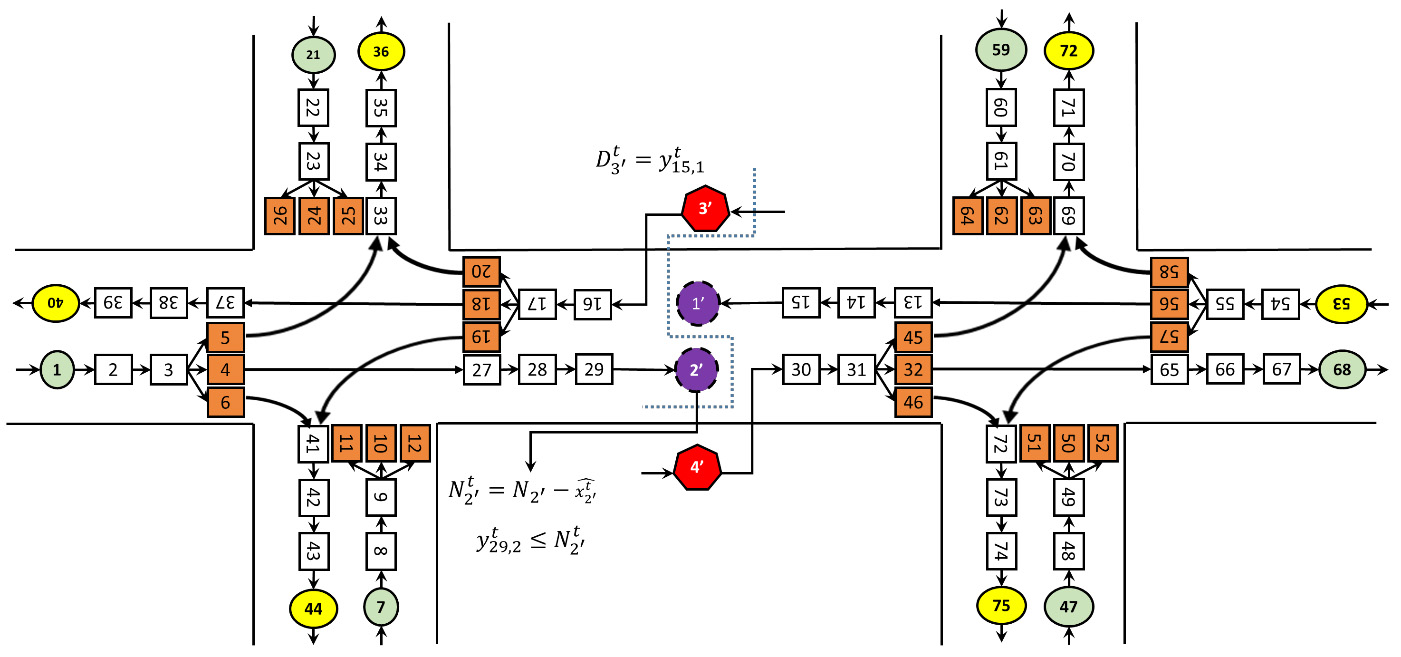Connected vehicles, the internet of things, and smart infrastructure technologies support the exchange of real-time, highly granular traffic information among transportation network users, system operators, and the supporting infrastructure. This project worked to harness this emergent connectivity and to improve traffic mobility by optimizing the timing of signalized intersections.
Typical signal system technology operates with data from pavement point detectors such as magnetic loops. It does not utilize connected vehicle data that may be generated from vehicles’ electronic control units, controller access networks, and infotainment systems, and it does not have the computational power to solve complex optimization models. This project developed an efficient distributed yet coordinated algorithm that can control signalized intersections in both connected corridors and those that are semi-connected (where not all vehicles have connectivity capability or refrain from sharing data for privacy reasons).
The improved traffic signal optimization model incorporates data from both connected vehicles and existing point detectors, distributes decisions at both the intersection and corridor levels to reduce computational complexity, and coordinates control decisions among various intersections through a distributed, cloud-fog-based communications network to create globally optimal traffic solutions.
The optimization model and solution technique can determine signal timing parameters in real time for large transportation networks. The model can account for different percentages of connected vehicles, transit movements, and time-varying demand. The solution technique is a predictive control model and follows a distributed architecture. The distributed optimization reduces computational complexity and allows the solution technique to be applied to transportation networks of various sizes. The cloud-fog communications architecture facilitates the execution of the solution technique.
Because of the COVID-19 pandemic, this project did not conduct any field tests, and all tests were performed with a micro-simulation testbed. Numerical results from tests on a simulated corridor with ten intersections showed that the approach can effectively determine near-optimal signal timing parameters under different demand levels. The researchers observed significant improvement in traffic operations with increased connected vehicle market penetration rates.
Authors:
Ali Hajbabaie
Mehrzad Mehrabipour
Rasool Mohebifard
Ahmed Abdel-Rahim
Sameh Sorour
Umair Yaqub
WSU Department of Civil and Environmental Engineering
Sponsor: PacTrans

